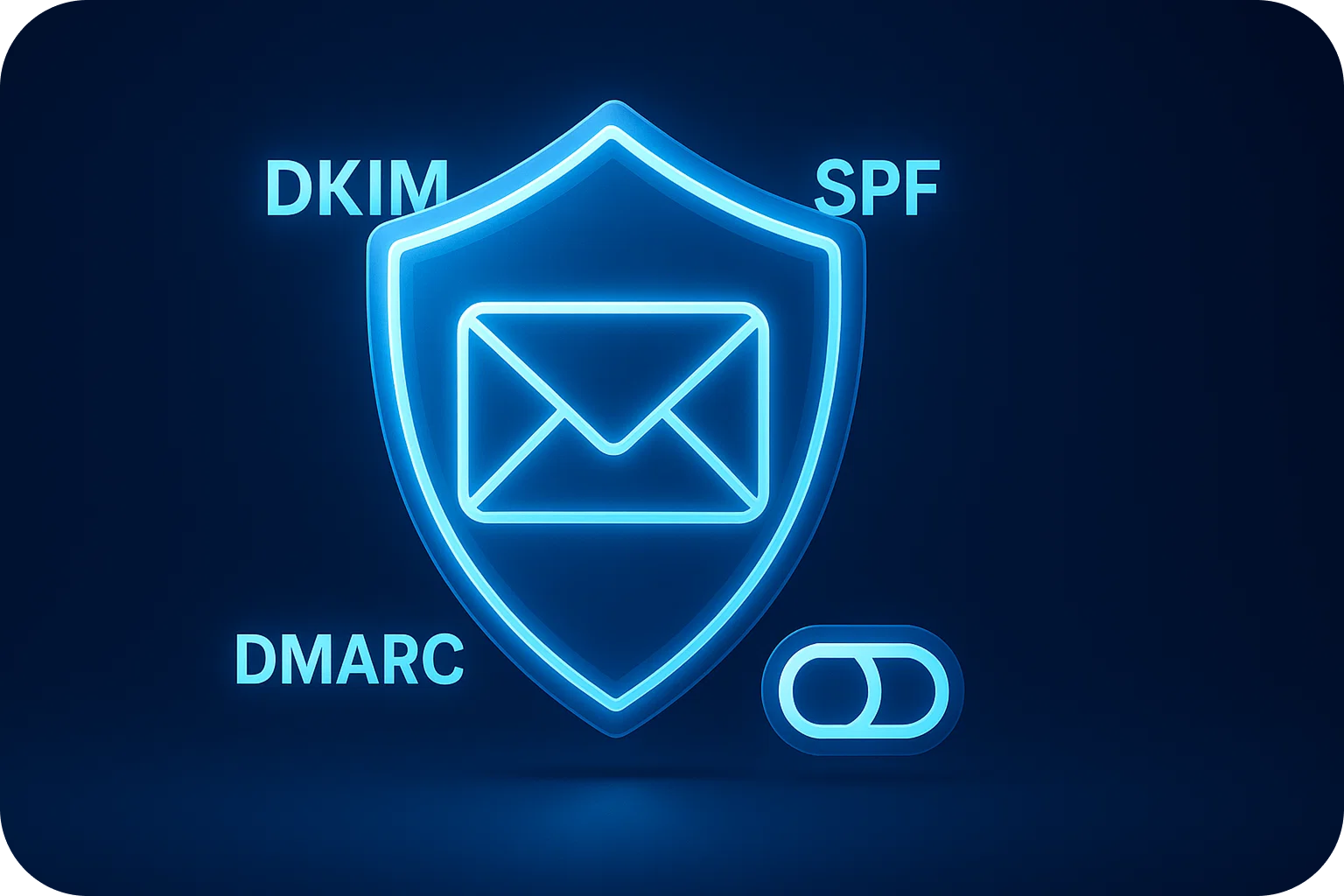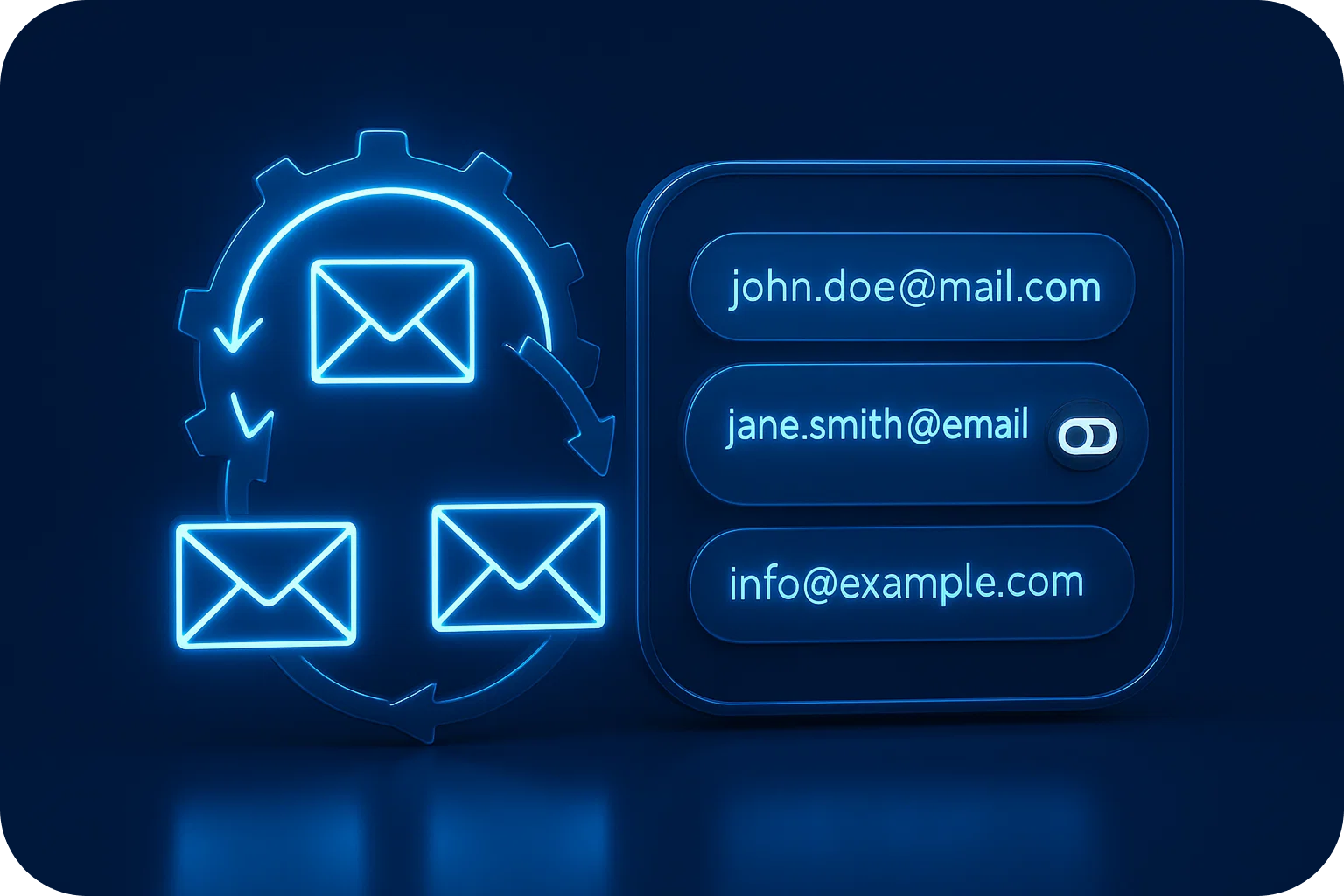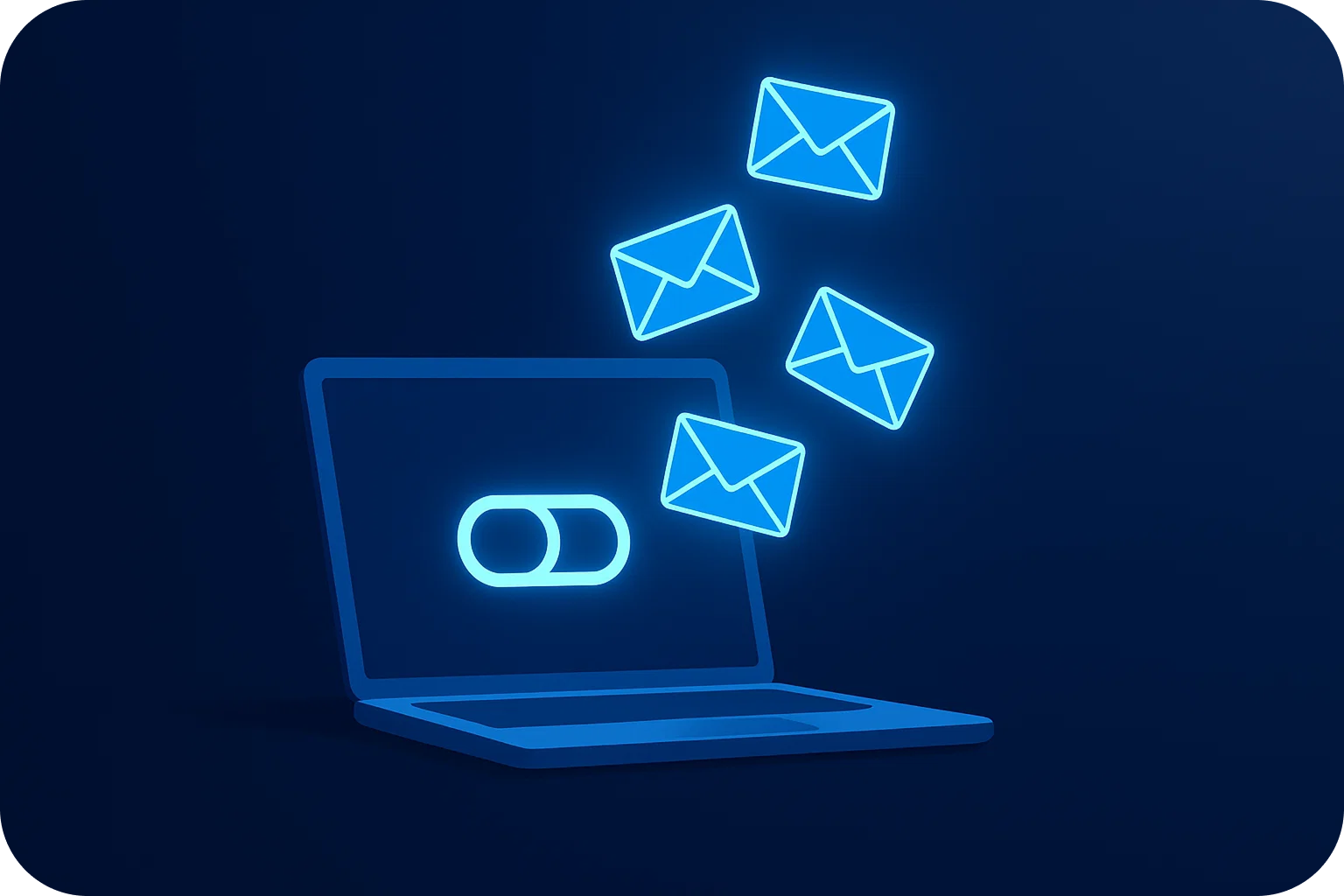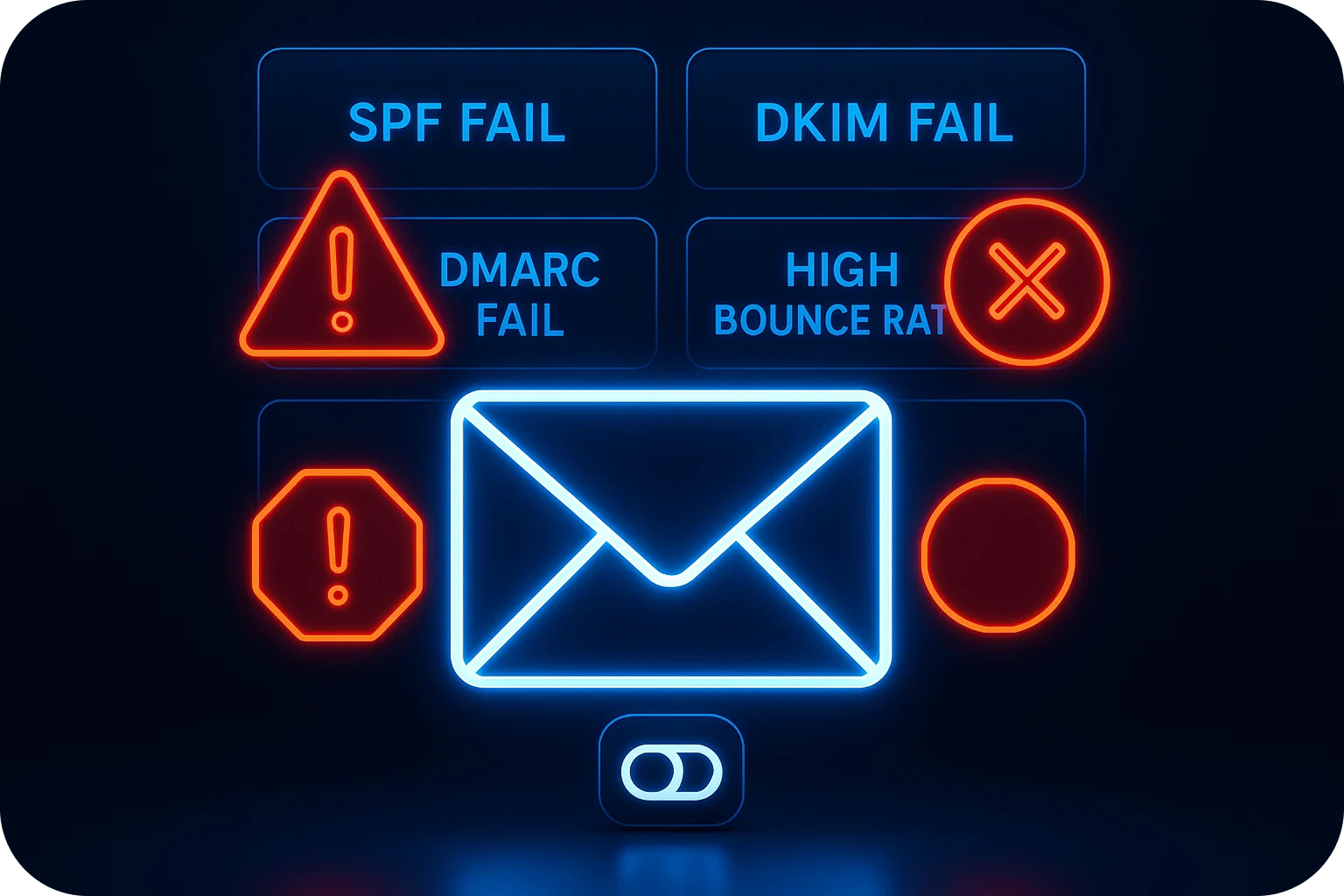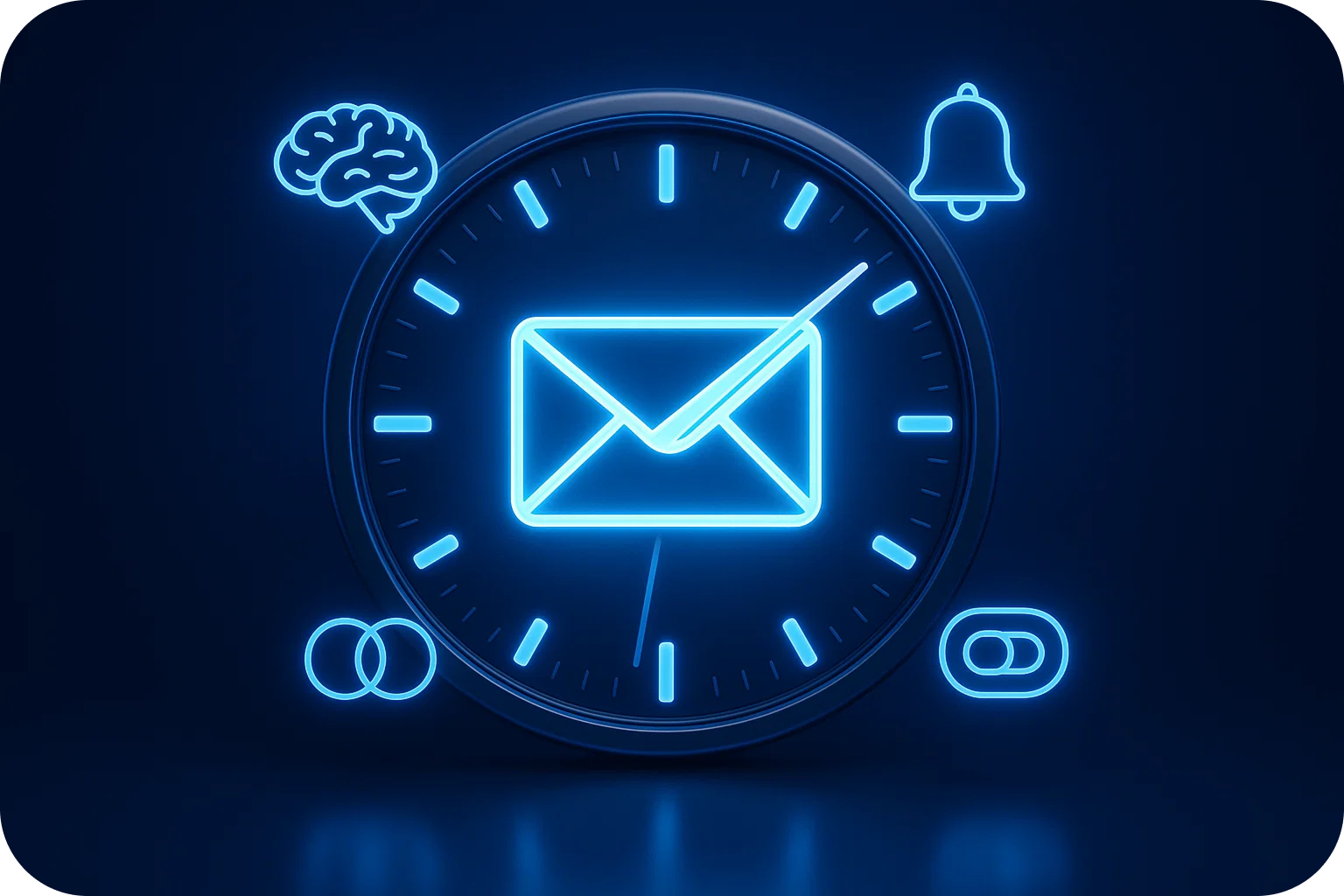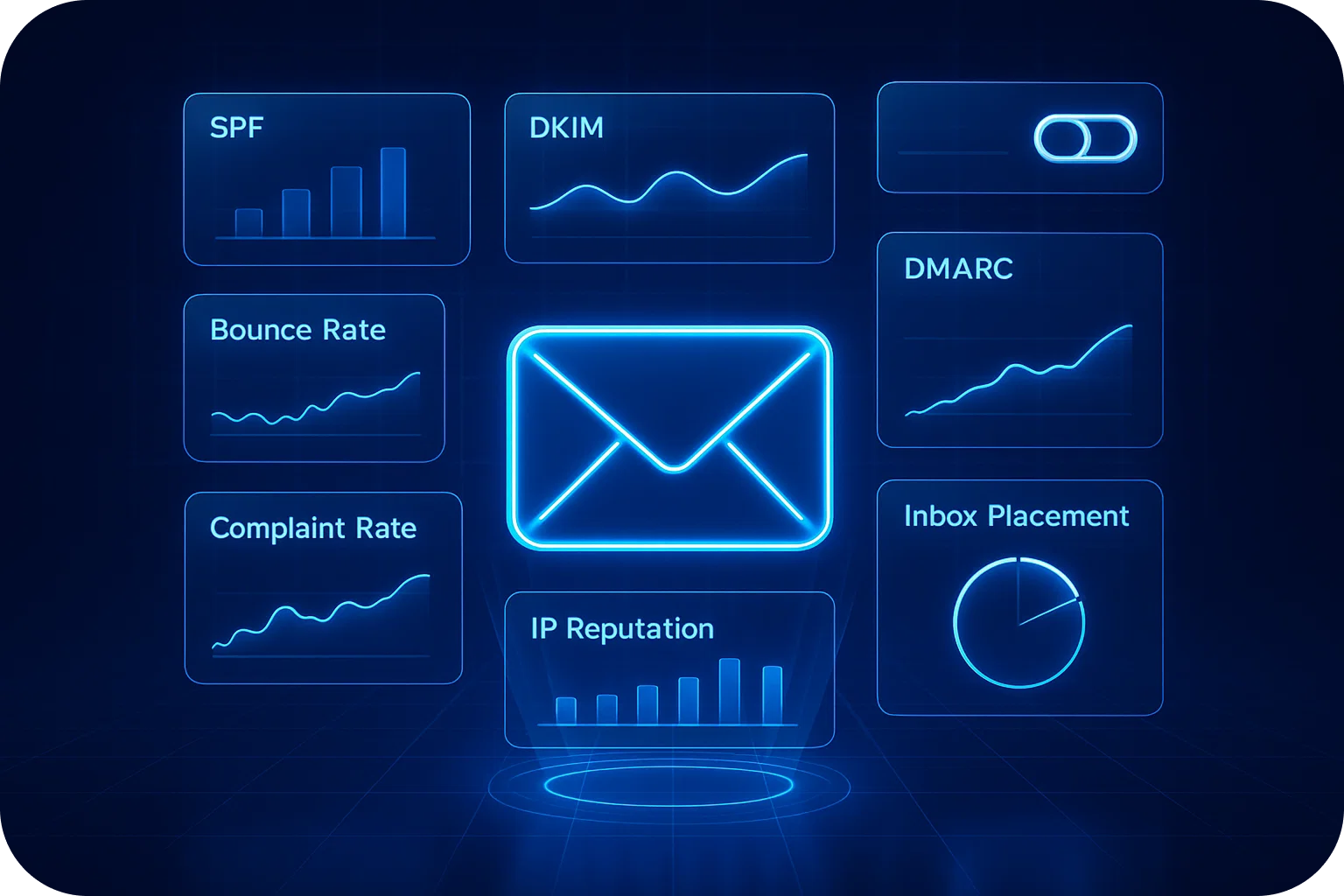Cold Email Timing Decoded: When Your Prospects Actually Read Their Inbox
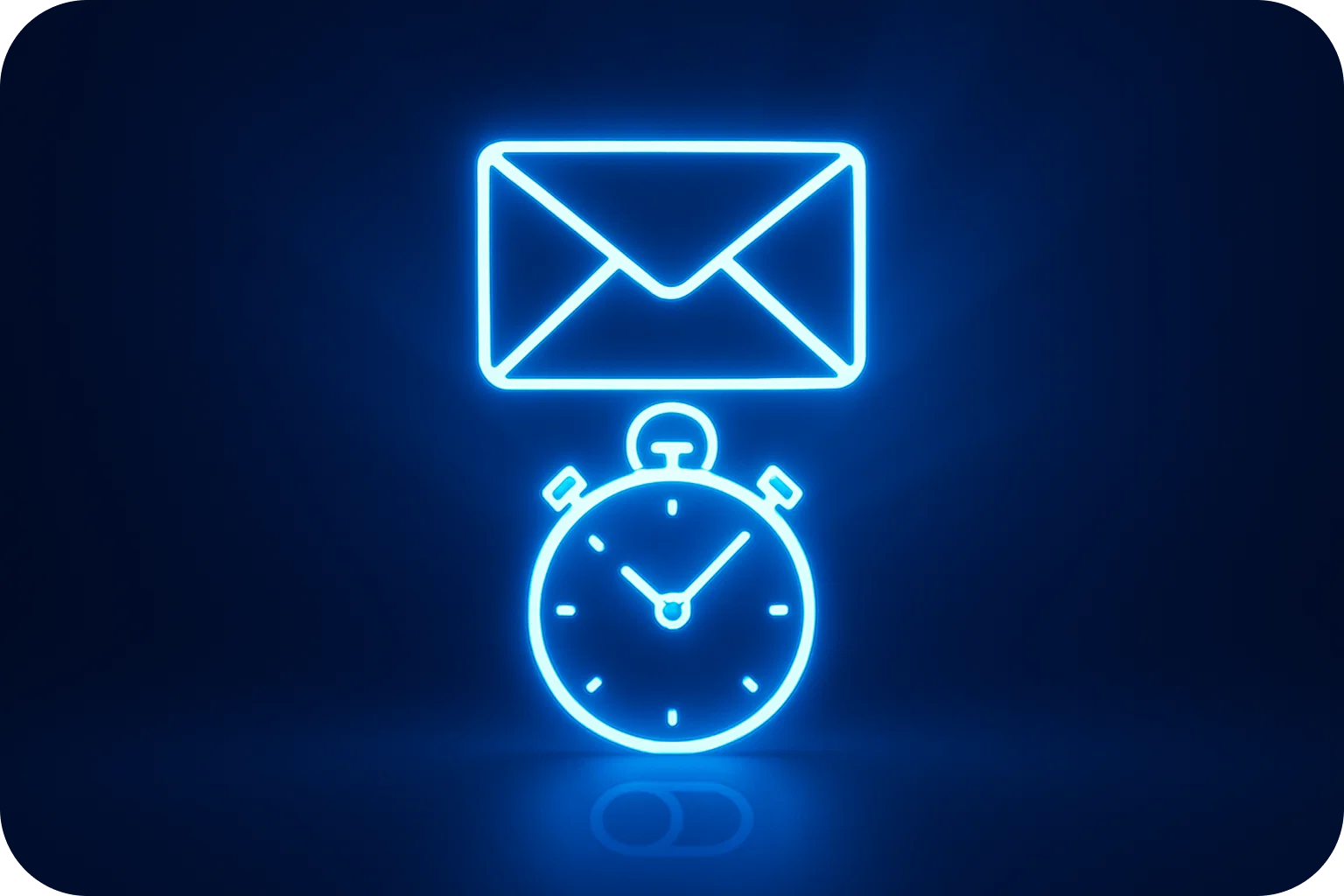
You've crafted the perfect cold email. The subject line is compelling, the copy is tight, and your value proposition is crystal clear. But there's one critical factor that could make or break your campaign before anyone even reads your message: timing.
Send time optimization isn't just about picking a random hour and hoping for the best. It's about understanding human behavior, respecting your prospect's workflow, and strategically positioning your message when they're most likely to engage. Let's decode the science and strategy behind cold email timing to help you boost open rates and reply rates.
Why Email Timing Matters More Than You Think
Your prospects aren't sitting idle, waiting for your email to arrive. They're in meetings, managing projects, putting out fires, and juggling dozens of competing priorities. The average professional receives over 120 emails per day, which means your message is competing for attention in an incredibly crowded space.
When you send your email determines whether it lands at the top of their inbox during a focused reading session or gets buried under an avalanche of other messages. The difference between sending at 9:00 AM versus 4:00 PM could mean the difference between a 40% open rate and a 15% open rate.
But here's the catch: there's no universal "best time" that works for everyone. Email timing is contextual, and understanding the nuances will give you a significant competitive advantage.
The Inbox Behavior Patterns You Need to Know
The Morning Check-In (6:00 AM - 9:00 AM)
Most professionals start their day with an inbox review. This is when they're catching up on what happened overnight, prioritizing their day, and deciding what needs immediate attention. Emails that arrive during this window benefit from fresh attention and lower competition, at least initially.
However, morning inbox checks are often rapid triage sessions. Your prospects are scanning subject lines quickly, archiving aggressively, and focusing primarily on urgent internal communications. Cold emails need to work harder to stand out during this period.
Best for: High-priority offers, time-sensitive opportunities, or messages to early risers and executives who tackle email before their day fills up.
The Mid-Morning Focus Block (9:00 AM - 11:00 AM)
After the initial morning rush, many professionals settle into focused work. Email checking becomes less frequent during this period, but when they do check, they're more thoughtful and deliberate. This is when decision-makers often handle strategic communications rather than just operational firefighting.
Best for: Detailed proposals, partnership opportunities, or messages that require careful consideration rather than quick responses.
The Lunch Hour Lull (12:00 PM - 1:00 PM)
Inbox activity spikes again during lunch breaks. People are more relaxed, scrolling through emails on their phones, and sometimes more open to exploring new ideas when they're mentally stepping away from their core work.
Mobile open rates are significantly higher during this window, which means your email formatting and subject line need to be mobile-optimized to capture attention on smaller screens.
Best for: Lighter, conversational outreach, content offers, or messages that don't require immediate deep thinking.
The Afternoon Productivity Push (2:00 PM - 4:00 PM)
Post-lunch energy varies widely. Some professionals hit their stride during afternoon hours, while others experience the dreaded 3:00 PM slump. Email engagement during this period tends to be moderate but consistent.
This window works well for follow-ups and secondary touches in your sequence, as prospects who saw your morning email might be more receptive to a gentle reminder later in the day.
Best for: Follow-up emails, meeting requests, or messages to prospects in different time zones.
The End-of-Day Wrap-Up (4:00 PM - 6:00 PM)
As the workday winds down, professionals often do a final inbox sweep. They're clearing out unread messages, setting up tomorrow's priorities, and tying up loose ends. Open rates can be strong during this period, but reply rates often lag because people are mentally checking out.
Best for: Informational content, resource sharing, or messages that don't require immediate response but position you for morning consideration.
The Day-of-Week Factor
Beyond time of day, the day of the week significantly impacts email performance. Here's what the data consistently shows:
Tuesday, Wednesday, and Thursday are the workhorses of cold email outreach. Inboxes are active, professionals are in their rhythm, and response rates tend to peak mid-week.
Monday is a wild card. Some prospects are energized and ready to tackle new opportunities. Others are drowning in weekend backlog and weekend emails, making your message easy to miss. Test Monday sends carefully with your specific audience.
Friday sees declining engagement as people mentally shift toward the weekend. However, some industries and roles (especially those in creative fields or less traditional work environments) show strong Friday engagement.
Weekends are generally low-engagement periods for B2B outreach, though there are exceptions for solopreneurs, founders, and certain executive-level contacts who catch up on strategic emails during quieter weekend hours.
Industry and Role-Specific Timing Strategies
Generic timing advice only gets you so far. Smart send time optimization requires understanding your specific audience:
Executives and C-Suite: Often check email very early (6:00-7:00 AM) or very late (after 6:00 PM). They're also more likely to review emails during weekend downtime.
Sales Professionals: Peak engagement is typically mid-morning (10:00-11:00 AM) after they've completed their own outreach activities.
Marketing Teams: Afternoon sends (2:00-4:00 PM) often perform well, as mornings are frequently consumed by meetings and campaign management.
Technical Roles (Developers, Engineers): Late morning to early afternoon (11:00 AM-2:00 PM) tends to work best, avoiding early morning standup meetings and late afternoon deep work sessions.
Time Zone Considerations for Global Outreach
If you're running campaigns across multiple time zones, you need a strategic approach to send time optimization. Sending all emails at 9:00 AM in your time zone means prospects in other regions might receive your message at 2:00 AM or 6:00 PM, far from ideal.
Modern cold email infrastructure platforms allow you to schedule sends based on the recipient's local time zone, ensuring your message arrives during their optimal inbox checking windows regardless of where they're located. This single adjustment can dramatically improve open rates for geographically distributed campaigns.
Testing Your Way to Timing Perfection
While general guidelines provide a starting point, the only way to truly optimize email timing for your specific audience is through systematic testing. Here's how to approach it:
Start with segments: Don't test timing across your entire list at once. Segment by industry, role, company size, or other relevant factors, then test timing within each segment.
Test one variable at a time: If you change both your send time and your subject line simultaneously, you won't know which factor drove performance changes.
Give tests sufficient volume: A/B tests with only 50 emails per variant won't give you statistically significant results. Aim for at least 200-300 emails per timing variant.
Track beyond open rates: Opens are important, but reply rates and conversion rates matter more. A send time that generates high opens but low replies isn't actually optimal.
Retest periodically: Inbox behavior changes over time, especially as work patterns evolve (remote work, flexible schedules, etc.). What worked six months ago might not be optimal today.
The Deliverability Connection
Here's something many sales teams overlook: send time optimization isn't just about human behavior; it also impacts email deliverability. Inbox providers monitor engagement patterns, and emails that consistently generate opens and replies signal to algorithms that your messages are valuable.
When you send emails at times that generate higher engagement, you're not just improving that single campaign's performance. You're also building a positive sender reputation that improves deliverability for all future campaigns. This is why platforms like Mailpool.ai emphasize both infrastructure and strategic timing as part of comprehensive deliverability management.
Putting It All Together: Your Action Plan
Ready to optimize your cold email timing? Here's your step-by-step approach:
- Establish your baseline: Review your current campaign data to understand your existing open rates and reply rates by send time.
- Segment your audience: Group prospects by relevant characteristics (industry, role, time zone, company size).
- Implement initial timing strategy: Based on the guidelines above, choose optimal send times for each segment. For most B2B audiences, start with Tuesday-Thursday sends between 9:00-11:00 AM in the prospect's local time zone.
- Run controlled tests: Systematically test different send times within each segment, tracking both open rates and reply rates.
- Analyze and iterate: After collecting sufficient data, implement your winning send times and continue testing secondary variables.
- Monitor long-term trends: Set quarterly reviews of your timing strategy to catch any shifts in prospect behavior patterns.
The Bottom Line
Email timing isn't a magic bullet that will transform terrible copy into campaign gold, but it's a powerful lever that amplifies everything else you're doing right. When you combine compelling messaging, proper technical infrastructure, and strategic send time optimization, you create the conditions for cold email success.
Your prospects are checking their inbox; you just need to be there when they're actually paying attention. Start testing, track your results, and refine your approach based on real data from your specific audience. The insights you gain will give you a lasting competitive advantage in the crowded world of cold email outreach.
More articles
Get started now




%201.png)
